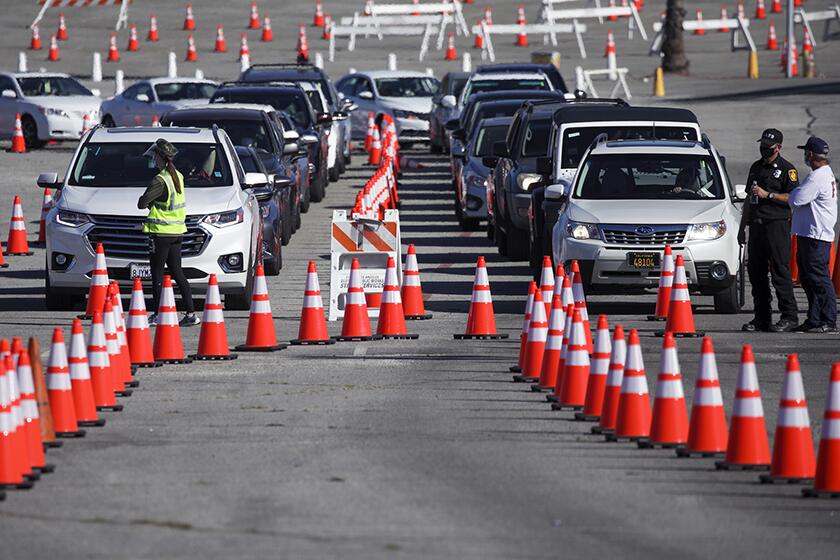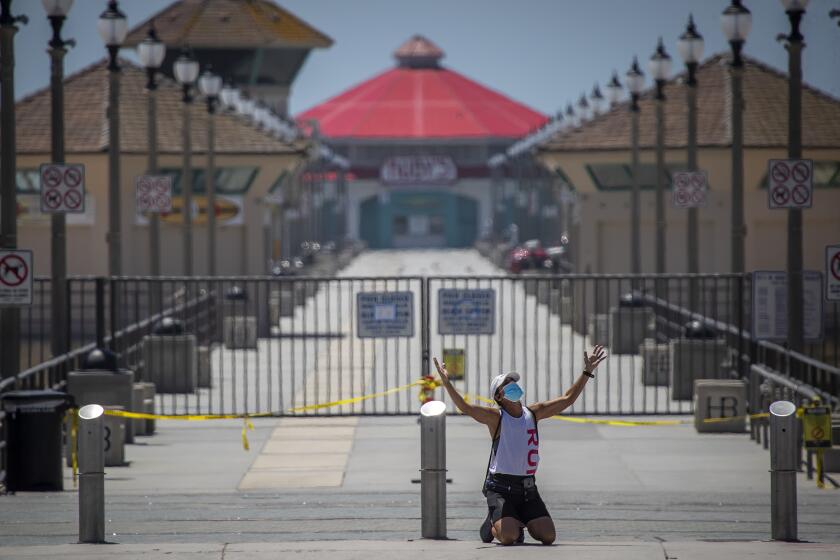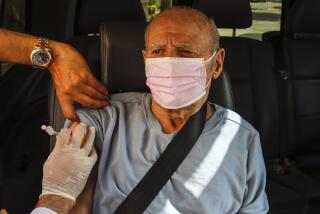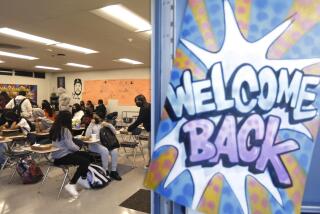Waves of Californians will be newly eligible for the vaccine. But getting it will be tough
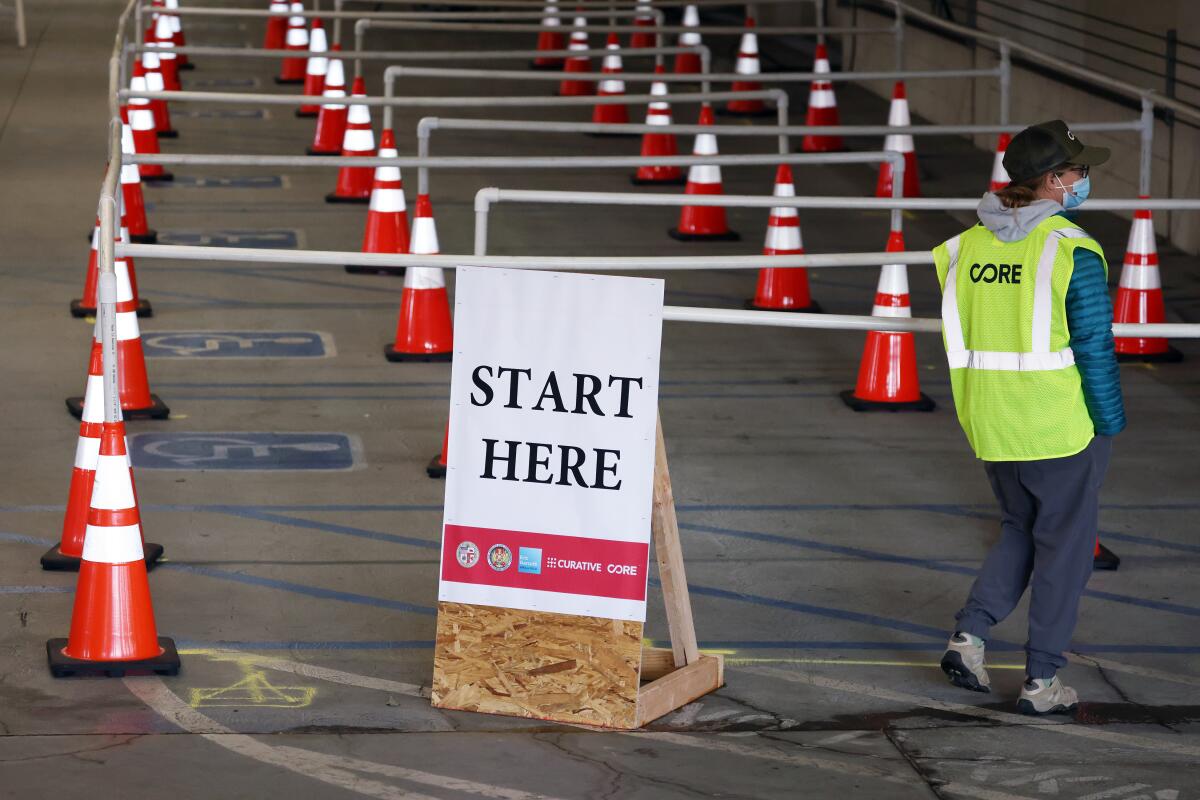
- Share via
More people are becoming eligible for the COVID-19 vaccine, but shortages are expected to keep supplies tight in the coming weeks.
Such constraints have dogged the vaccine rollout in California and across the nation since the first shots became available in December, but officials had expressed optimism that the arrival of a third viable offering from Johnson & Johnson would expedite the process.
Although that’s expected, ultimately, to be the case, officials said those shots would remain in short supply in the near term because of production delays.
Gov. Gavin Newsom said Wednesday that “in the immediate term” the state doesn’t anticipate receiving additional doses of that particular vaccine — which health officials have hailed as a potential pandemic game-changer, as it requires only one dose and does not need to be shipped and stored at freezing temperatures.
The next few weeks, he added, will remain “a constrained environment in terms of access to vaccines.”
Such limitations, though always unwelcome, are coming at an inopportune time, as significantly more Californians will soon be able to take their place in the vaccine line.
L.A. County’s COVID-19 vaccine supply is expected to tighten just as more people become eligible, because of a shortage of Johnson & Johnson shots.
Who is now eligible for vaccination?
The state eligibility list has already expanded to include custodians and janitors; public transit workers; airport ground crew workers; social workers who handle cases of violence, abuse or neglect; and foster parents providing emergency housing for young people, according to Los Angeles County Public Health Director Barbara Ferrer.
L.A. County is coordinating with unions and employers to set up vaccination sites and make appointments for these newly eligible groups.
Vaccine appointments for custodians and janitorial workers could be available at two large county-run vaccination sites as soon as Saturday and Sunday at the Forum in Inglewood and at the L.A. County Office of Education in Downey on Saturday.
The addition of these job sectors further widens the pool of those who can be inoculated, which already includes those 65 years and older, as well as essential workers in food and agriculture, education and child care, healthcare and emergency services.
Southern California is used to bouncing back from earthquakes, wildfires and other disasters, but COVID-19 brought crisis upon crisis — “cascading collective trauma,” some scientists called it.
Who is next?
California’s eligibility list is set to further expand Monday to include those with qualifying health conditions, such as:
- Cancer, with a current weakened immune system
- Chronic kidney disease, Stage 4 or above
- Chronic pulmonary disease, oxygen dependent
- Down syndrome
- Solid organ transplant, leading to a weakened immune system
- Pregnancy
- Sickle cell disease
- Heart conditions, such as heart failure, coronary artery disease, or cardiomyopathies (but not hypertension)
- Severe obesity with a BMI of more than 40
- Type 2 diabetes with A1C level greater than 7.5%
- A disability that makes serious illness from COVID-19 likely or that would limit a person’s ability to receive vital care for the disease, or make treatment for COVID-19 particularly challenging.
The state is still finalizing the list of medical conditions that will qualify people younger than 65 for the COVID-19 shot, Ferrer said.
But she expects hundreds of thousands of additional people in L.A. County will become eligible.
“Our numbers are likely to go down slightly on how many doses we get, but we’re going to have many more people that are going to be eligible on Monday,” Ferrer said. “So, again, I feel bad always asking everybody to be somewhat patient, because even though it is your turn, it’s still going to be hard to get appointments.”
A pair of studies in Science examine how coronavirus variants evolve in human hosts and why experts are concerned about relaxing restrictions too soon.
How should they proceed?
Ferrer suggested that people with underlying conditions contact their healthcare providers to ask about getting the vaccine.
“The easiest way for you to get vaccinated,” she said, “is going to be to go to your provider, or if your provider has an arrangement with a network, to get vaccinated.”
In a statement, the county added: “Providers and healthcare facilities are working to use their health record systems to identify patients who have these conditions and reach out to them so they can be vaccinated.”
More to Read
Sign up for Essential California
The most important California stories and recommendations in your inbox every morning.
You may occasionally receive promotional content from the Los Angeles Times.
